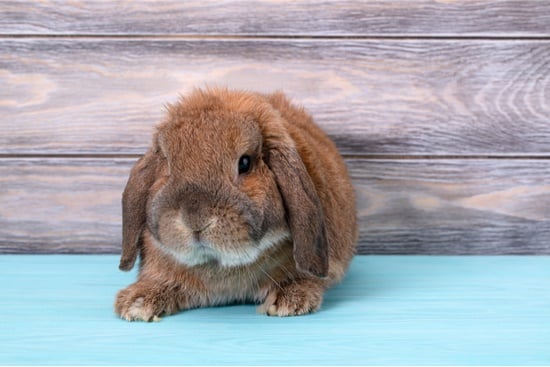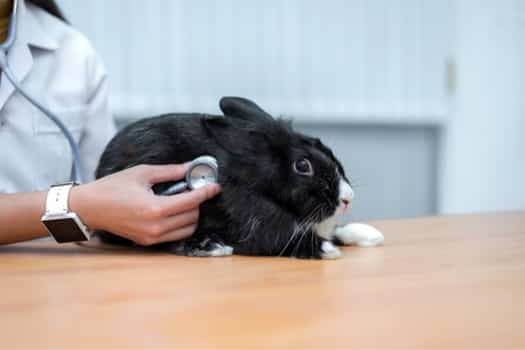Scientific research on the anatomy of the rabbit is limited compared to other types of small animals. This means that misinformation about lagomorph sweat glands is commonly found online.
Rabbits do have tiny scent glands inside the mouth. Unfortunately, rabbits breathe through the nose, rendering these glands completely useless. Rabbits have no external sweat glands. This means that your pet is incapable of sweating, even if she’s boiling hot.
That’s why you need to ensure that your rabbit’s hutch isn’t excessively hot. She cannot cool off by sweating, so your pet is relying on you to keep her temperature at a safe, constant level.
Do Rabbits Sweat?
Technically, rabbits do sweat. It is not easy for a rabbit to so, though. Rabbits only have one set of sweat glands, which are located inside the mouth. As rabbits are obligate nose breathers, these are largely useless.
This means that rabbits struggle to maintain a comfortable body temperature when it’s hot. Rabbits cannot pant effectively. If your rabbit pants like a dog, she is in distress.
This makes summer tough for rabbits. Your pet must maintain a seasonal shedding pattern. At the onset of spring, rabbits shed large amounts of fur. This is essential.
A rabbit that maintains her winter fur in summer will quickly overheat. Imagine wearing a thick woolen coat in August which cannot be removed. Now imagine that you cannot even sweat to cool off. This is how your rabbit feels.
Keep an eye on your rabbit during hot weather. If her mouth is damp, she is likely trying to sweat. This suggests that she is too hot. Take action to make her more comfortable.
How Does a Rabbit Control Her Body Temperature?
Your rabbit uses her ears to stay cool in hot temperatures. Michigan State University explains how this works. When your pet feels warm, more blood will flow to her ears. This will make the blood vessels in the ears expand.
Your rabbit’s ears are also the least furry part of her anatomy. This means that heat can escape from the ears. This is even true of lop-eared breeds. Your rabbit will rely upon this technique to cool off. You should also assist your pet wherever possible. To keep rabbit cool in hot conditions:
- Move your rabbit’s hutch away from a direct source of sunlight. Bring it inside if necessary, until the temperatures come down a little.
- Place a small fan close to your rabbit’s hutch. Don’t blow the cool air straight in your pet’s face, though. Rabbits dislike draughts.
- Ensure that your rabbit has access to cool water. If your rabbit is drinking a lot, this may be the reason why. Put some ice in her water bottle. Your pet may also enjoy chewing and crunching on ice cubes.
- Offer a cooling mat, or a ceramic tile, for your pet to sit on.
- Regularly groom your rabbit. Run a brush through her fur twice a day. This will remove excess fur and keep your pet’s temperature down.
- Periodically apply a cool, damp cloth to your rabbit’s ears. If she tolerates it, spray a mist around your rabbit too.
You may notice that your rabbit digs during the summer. This is an instinct behavior. Wild rabbits dig burrows and hide from the sun. The rabbit will then emerge when the temperature is lower.
A domesticated rabbit will often lack this option. Your pet may burrow in her hutch, but this will not be deep. An upturned cardboard box will perform a similar job.

How Do I Know if My Rabbit is Overheating?
Preventing hyperthermia is always safer than attempting to treat it. Familiarize yourself with the symptoms. Seek medical help if you suspect that your rabbit is overheating. This condition can quickly be fatal. Warning signs include:
- Body temperature above 103 degrees Fahrenheit
- Bright red ears
- Attempted panting. Rabbits will struggle, so it may sound you’re your pet is gasping for air
- Dampness around the lips and mouth. This may extend to salivating. This is the equivalent of a rabbit sweating profusely
- Lethargy and an uncharacteristic clumsiness in gait and movement
- Convulsions and seizures
The golden rule is that a rabbit will always prefer to be cold than hot. Rabbits do better in the winter months than in the summer months. Do not ascribe human comfort levels to rabbits. Your pet cannot cool herself off by sweating or panting.
Do Rabbits Sweat Through Their Feet?
A rabbit’s sweat glands are located inside her mouth. A study in the American Journal of Physiology confirms that rabbit paws contain no sweat glands.
Misinformation surrounding rabbit anatomy is rife. Some sources continue to claim that rabbits sweat through paw pads. This misunderstanding can be dangerous.
If your rabbit’s paws are wet, it’s not because her feet are sweaty. It’s because your pet uses her paws as an organic washcloth. She’ll lick her paws and rub the saliva all over her body to cool off.
My Rabbit Smells Sweaty
Rabbits are generally clean pets, not prone to foul smells. The most distinctive smell in your rabbit’s hutch is usually the ammonia in her urine. Occasionally, though, you may detect a musky, sweaty scent on her fur comparable to body odor.
This aroma is not a result of sweat. Instead, it will be your rabbit’s scent glands. These two body parts sound similar, but perform very different roles. Rabbits use scent glands to mark territory and communicate with each other.
If a rabbit’s scent glands become blocked, a strong, pungent smell will follow. Again, this is not the smell of sweat. Your rabbit is not capable of sweating outside of her mouth.
Your rabbit’s scent glands are located under her chin and around the genitals and anus. This is why your rabbit rubs her chin on your hand. She is claiming you as her own. Usually, a chin scent gland will not leave any noticeable aroma.
If her genital scent glands become blocked, this produces a brown wax responsible for the foul, sweaty smell. This will be unpleasant for you to live with. Your rabbit will not care for it either.
Most rabbits take care of cleaning these scent glands through grooming. Your pet may not be capable of doing so, though. This is likely in older rabbits with limited mobility. If your rabbit is overweight, she’ll also struggle to reach her scent glands.
If this is the case, you’ll need to clean these glands manually. Failing to do so will make the sweaty smell increasingly pungent. Besides, an infection becomes a risk.
If your pet is prone to a sweaty smell, introduce genital cleaning to her routine. This should be done around once a month. If your rabbit starts to smell between cleans, investigate the cause. Changes to diet or lifestyle may be required.
How to Clean a Rabbit’s Scent Glands
Cleaning the waxy build-up around a rabbit’s scent glands is unpleasant. Your rabbit will not enjoy the sweaty smell any more than you do. To clean your rabbit’s scent glands:
- Pick up your rabbit and hold her so you have access to her genitals. Consider offering your rabbit a snack to distract her. Keep talking to your pet in a gentle tone to reassure her.
- Support your rabbit’s weight and restrain her hind legs. This will prevent her from kicking out at you. Don’t apply too much pressure. Rabbit bones are very brittle and easily break.
- Take a moist Q-Tip and gently separate the skin around your rabbit’s genitals and anus. You may wish to consider applying a lubricating agent to the Q-Tip too. Vaseline is rabbit-safe.
- Look out for any wax, and gently wipe it away. This will be clogging the scent glands and creating the foul smell. Keep going until there is no sign of further wax.
- Wash the affected area and let your rabbit go. Do not apply perfume under any circumstances. This may mask the smell, but it will damage your pet’s sensitive skin.
If your rabbit is panting, do not assume that she is cooling herself off. Your rabbit’s temperature must be carefully managed during hot weather. Any sign of overheating must be corrected.

